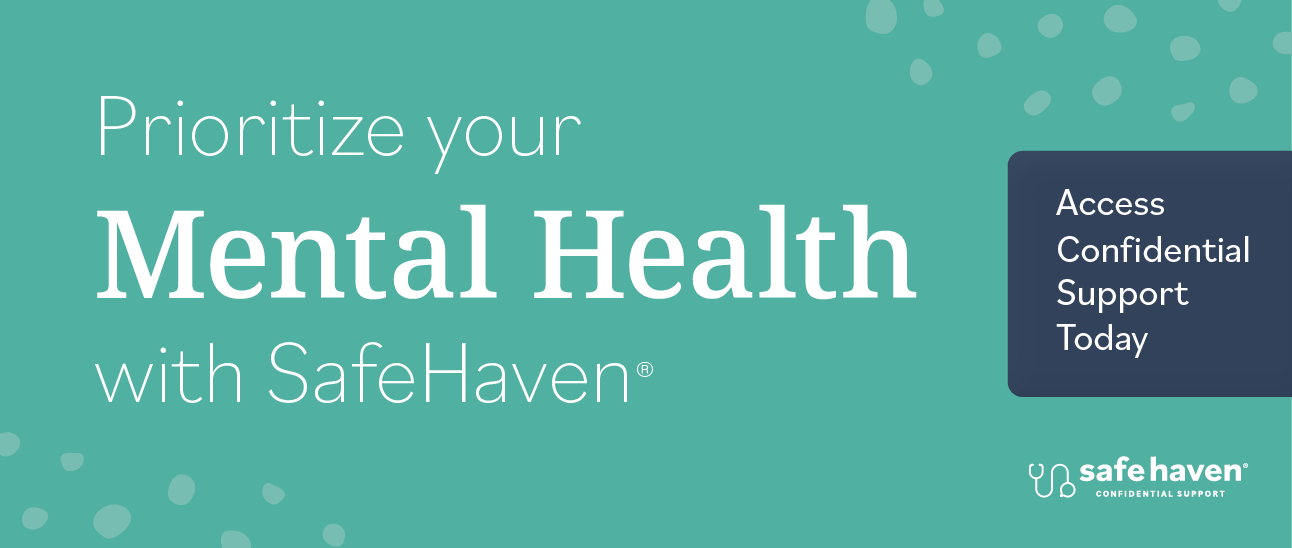Great Patient Conversations Create Great Patient Relationships
Paula is new to the area and is looking for a new dentist. She does a quick Google search and calls your practice for an appointment. Paula arrives and takes a seat to wait her turn. She is called to the back where she is diagnosed and given your recommendations. Your financial coordinator tells her that her insurance will only cover a portion of needed care and asks how she wants to pay the rest. Paula responds, "You know, I'd like to talk it over with my husband. I'll give you a call." She never does.
Every day thousands of great patients leave dental practices without committing to care. Why? Often it is simply that the practice team is not well-versed in communicating value. Communication is the cornerstone of delivering a great patient experience that results in treatment acceptance and long-term patient relationships. There are two definitions to the word communication. The first is imparting or exchanging of information or news. The second is a means of connection between people or places. If you would like to have great patient conversations, there are two key words in these definitions to focus on: exchanging and connection. In addition, the exchange of information and the connection to patients needs to result in understanding. Patients may exchange information and they may connect with your team, but if they truly don't understand your recommendations and payment solutions, they won't be able to attach any value to them. And when patients don't value your recommendations, they are not likely to accept them, regardless of cost or personal finances.
Paula's Patient Journey
Let's look at what may have happened along Paula's patient journey.
Her first contact with the practice was by telephone. When she called, she didn't know it was an extremely busy time at the practice. She was abruptly put on hold. Then, when Paula was able to talk to the person at the front desk, she seemed rushed, distracted and the conversation almost solely focused on insurance benefits.
Truth is, you truly do only have one chance to make a great first impression. That first phone contact is the opportunity to use great communication skills that gets patients excited about dentistry and gives them information that makes them confident they chose the right practice.
When Paula arrived, she was handed forms to complete, steered towards the reception area and was told "someone would be with you shortly."
Elevating this first person-to-person contact can make the patient feel immediately connected to the team. When they are greeted by name, welcomed personally and given a quick tour, they feel welcomed and valued. The practice environment can also communicate value to the patient with patient testimonials and information that eases possible concerns such as the availability of sedation and financing solutions.
Paula randomly scanned a magazine and then was called from the doorway to the back of the practice. She followed the dental assistant to the operatory and was guided into the chair. The doctor arrived and asked Paula why she came to see him. He did an examination, shared the results and explained his treatment recommendation.
During the treatment discussion, Paula was shy about asking questions and didn't truly understand the results of the examination or the treatment being recommended. According to the first definition of communication, you can either "impart" or "exchange" information. When you are imparting information, you are talking at the patient. Conversely, when you are exchanging information, you are having a dialogue with the patient where there is opportunity to enhance and ensure understanding - on both sides. This is important because strong relationships, treatment acceptance and patient retention start with the dentist and team understanding what the patient wants for their oral health and the patient understanding how the dentistry will benefit them specifically and personally.
Finally, Paula was led to the financial coordinator, who shared with her that her insurance was limited and that her out-of-pocket cost today was $875. She asked Paula how she wanted to pay and waited for Paula to answer.
The financial conversation is one of the most critical dialogues in the practice. Most patients believe dentistry is important or they wouldn't come to the practice, yet many may delay or decline care because of cost. Great communication skills are critical when the team discusses something as personal as money. Visual aids can be especially useful in helping patients understand their financial responsibilities and options.
Great Communication Connects to Patients' Needs and Wants
Treatment acceptance is the natural result of connecting personally with patients by treating them as a person, not a patient. Over the past three decades, CareCredit Practice Development Managers have visited tens of thousands of practices, learning from teams on the front line communication techniques that work. Additionally, CareCredit has worked with leading dental educators to create resources that can help their verbal and nonverbal communication skills. Here are just a few:
Online Payment Calculator - a visual aid that shows patients what their estimated monthly payment may be and how dentistry can fit into their household budget.
Payment Options Form - a printable document that details all the payment options available and the payment responsibilities that can be given to the patient to take home for future reference.
Tips & Scripts Kit - practical communication tips and sample scripts for all patient conversations, resulting in a great patient experience.
CareCredit Direct - is a new software application teams can download onto a patient-facing tablet or PC. Patients can use CareCredit Direct to easily learn about and apply for CareCredit privately, at their own pace. And the team can save a little time in their busy day.
CareCredit's team of Practice Development Managers are available to connect teams to even more free resources that can help them with key practice issues such as recall, patient retention, the patient hand-off, failed appointments and referrals.
Ultimately, when you approach every patient with the knowledge that the dentistry your team delivers can truly and positively impact their lives, you will "say it" with compassion, confidence and a desire to help the patient get the care they need, without delay! And you get a happy, compliant and loyal patient in return.
Dental teams who accept CareCredit can reach their Practice Development Manager by calling 800-859-9975, option 1, then 6.
About the Author: Sameer Bhasin is Vice President of Strategic Alliances at CareCredit, responsible for working with dentistry's key opinion leaders and educators to gather the latest insights and trends. Previously, Mr. Bhasin held positions as a CareCredit Practice Development Manager and Regional Sales Manager where he acquired more than a decade of front line practice experience. He holds a both a Bachelor's Degree and Master's Degree in Business and an MBA in Healthcare Administration.
Every day thousands of great patients leave dental practices without committing to care. Why? Often it is simply that the practice team is not well-versed in communicating value. Communication is the cornerstone of delivering a great patient experience that results in treatment acceptance and long-term patient relationships. There are two definitions to the word communication. The first is imparting or exchanging of information or news. The second is a means of connection between people or places. If you would like to have great patient conversations, there are two key words in these definitions to focus on: exchanging and connection. In addition, the exchange of information and the connection to patients needs to result in understanding. Patients may exchange information and they may connect with your team, but if they truly don't understand your recommendations and payment solutions, they won't be able to attach any value to them. And when patients don't value your recommendations, they are not likely to accept them, regardless of cost or personal finances.
Paula's Patient Journey
Let's look at what may have happened along Paula's patient journey.
Her first contact with the practice was by telephone. When she called, she didn't know it was an extremely busy time at the practice. She was abruptly put on hold. Then, when Paula was able to talk to the person at the front desk, she seemed rushed, distracted and the conversation almost solely focused on insurance benefits.
Truth is, you truly do only have one chance to make a great first impression. That first phone contact is the opportunity to use great communication skills that gets patients excited about dentistry and gives them information that makes them confident they chose the right practice.
When Paula arrived, she was handed forms to complete, steered towards the reception area and was told "someone would be with you shortly."
Elevating this first person-to-person contact can make the patient feel immediately connected to the team. When they are greeted by name, welcomed personally and given a quick tour, they feel welcomed and valued. The practice environment can also communicate value to the patient with patient testimonials and information that eases possible concerns such as the availability of sedation and financing solutions.
Paula randomly scanned a magazine and then was called from the doorway to the back of the practice. She followed the dental assistant to the operatory and was guided into the chair. The doctor arrived and asked Paula why she came to see him. He did an examination, shared the results and explained his treatment recommendation.
During the treatment discussion, Paula was shy about asking questions and didn't truly understand the results of the examination or the treatment being recommended. According to the first definition of communication, you can either "impart" or "exchange" information. When you are imparting information, you are talking at the patient. Conversely, when you are exchanging information, you are having a dialogue with the patient where there is opportunity to enhance and ensure understanding - on both sides. This is important because strong relationships, treatment acceptance and patient retention start with the dentist and team understanding what the patient wants for their oral health and the patient understanding how the dentistry will benefit them specifically and personally.
Finally, Paula was led to the financial coordinator, who shared with her that her insurance was limited and that her out-of-pocket cost today was $875. She asked Paula how she wanted to pay and waited for Paula to answer.
The financial conversation is one of the most critical dialogues in the practice. Most patients believe dentistry is important or they wouldn't come to the practice, yet many may delay or decline care because of cost. Great communication skills are critical when the team discusses something as personal as money. Visual aids can be especially useful in helping patients understand their financial responsibilities and options.
Great Communication Connects to Patients' Needs and Wants
Treatment acceptance is the natural result of connecting personally with patients by treating them as a person, not a patient. Over the past three decades, CareCredit Practice Development Managers have visited tens of thousands of practices, learning from teams on the front line communication techniques that work. Additionally, CareCredit has worked with leading dental educators to create resources that can help their verbal and nonverbal communication skills. Here are just a few:
Online Payment Calculator - a visual aid that shows patients what their estimated monthly payment may be and how dentistry can fit into their household budget.
Payment Options Form - a printable document that details all the payment options available and the payment responsibilities that can be given to the patient to take home for future reference.
Tips & Scripts Kit - practical communication tips and sample scripts for all patient conversations, resulting in a great patient experience.
CareCredit Direct - is a new software application teams can download onto a patient-facing tablet or PC. Patients can use CareCredit Direct to easily learn about and apply for CareCredit privately, at their own pace. And the team can save a little time in their busy day.
CareCredit's team of Practice Development Managers are available to connect teams to even more free resources that can help them with key practice issues such as recall, patient retention, the patient hand-off, failed appointments and referrals.
Ultimately, when you approach every patient with the knowledge that the dentistry your team delivers can truly and positively impact their lives, you will "say it" with compassion, confidence and a desire to help the patient get the care they need, without delay! And you get a happy, compliant and loyal patient in return.
Dental teams who accept CareCredit can reach their Practice Development Manager by calling 800-859-9975, option 1, then 6.
About the Author: Sameer Bhasin is Vice President of Strategic Alliances at CareCredit, responsible for working with dentistry's key opinion leaders and educators to gather the latest insights and trends. Previously, Mr. Bhasin held positions as a CareCredit Practice Development Manager and Regional Sales Manager where he acquired more than a decade of front line practice experience. He holds a both a Bachelor's Degree and Master's Degree in Business and an MBA in Healthcare Administration.






